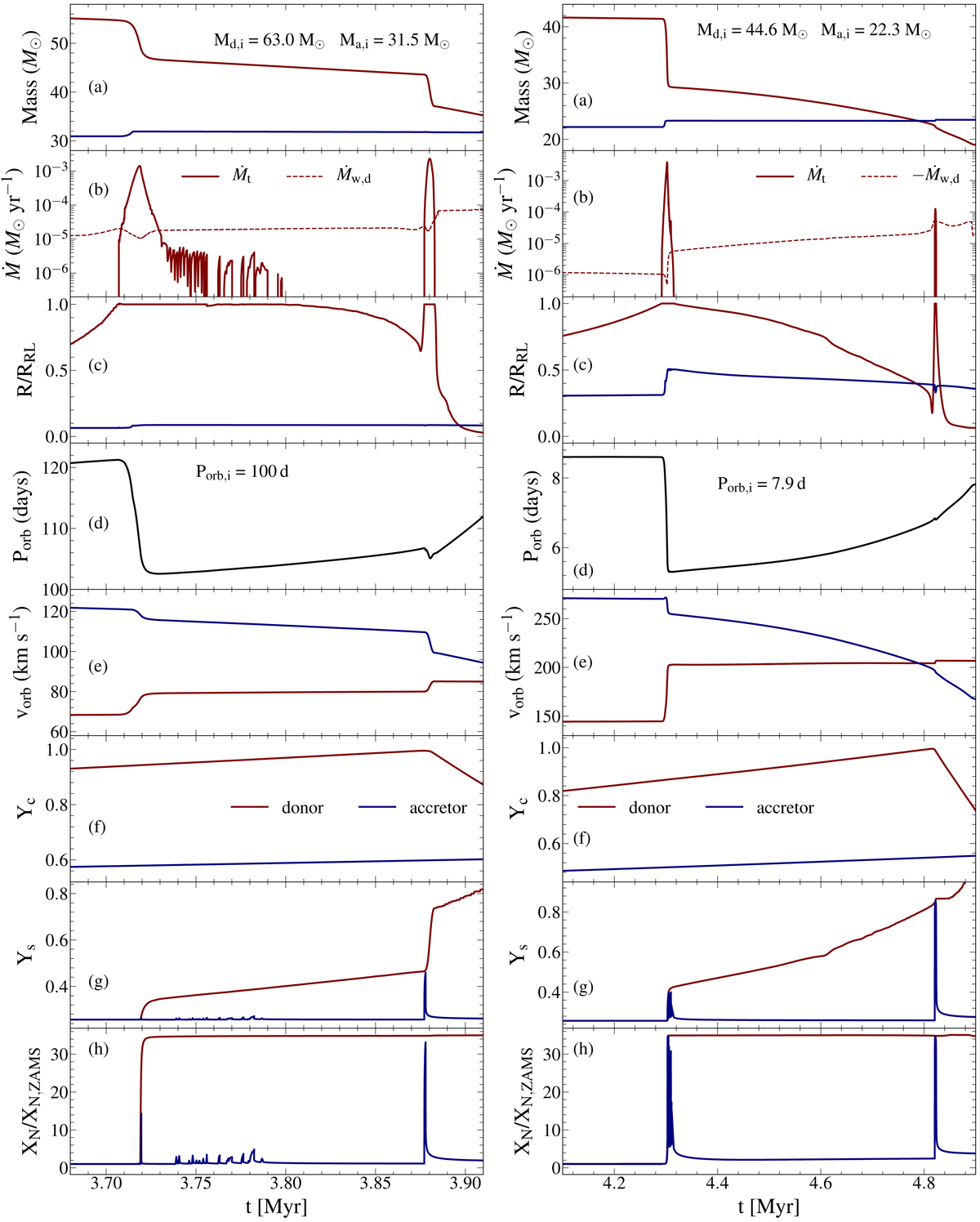Fig. A.1.

Download original image
Examples of reverse Algol evolution. Left panel: Model that undergoes nuclear-timescale, slow, Case A mass transfer in the reverse Algol configuration. The initial donor mass, mass ratio, and orbital period of the model are 63.0 M⊙, 0.5, and 100 d, respectively. Right panel: Model that detaches after fast Case A mass transfer. The initial donor mass, mass ratio, and orbital period of the model are 44.6 M⊙, 0.5, and 7.9 d, respectively. We show selected stellar parameters as a function of time, where t = 0 denotes the ZAMS of both stars. (a): Donor (red) and accretor (blue) mass. (b): Mass transfer rate Ṁt (thick red line) and wind mass-loss rate of the donor (− Ṁw,d, red dotted line). (c): Ratio of the donor and accretor radius to their respective Roche lobe radii. (d): Orbital period. (e): Orbital velocity of donor and accretor. (f): Central helium mass fraction of donor and accretor. (g): Surface helium mass fraction. (h): Surface nitrogen mass fraction enhancement factor.
Current usage metrics show cumulative count of Article Views (full-text article views including HTML views, PDF and ePub downloads, according to the available data) and Abstracts Views on Vision4Press platform.
Data correspond to usage on the plateform after 2015. The current usage metrics is available 48-96 hours after online publication and is updated daily on week days.
Initial download of the metrics may take a while.


